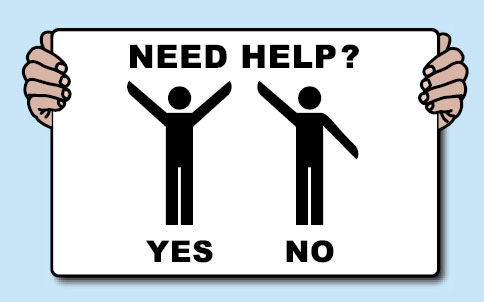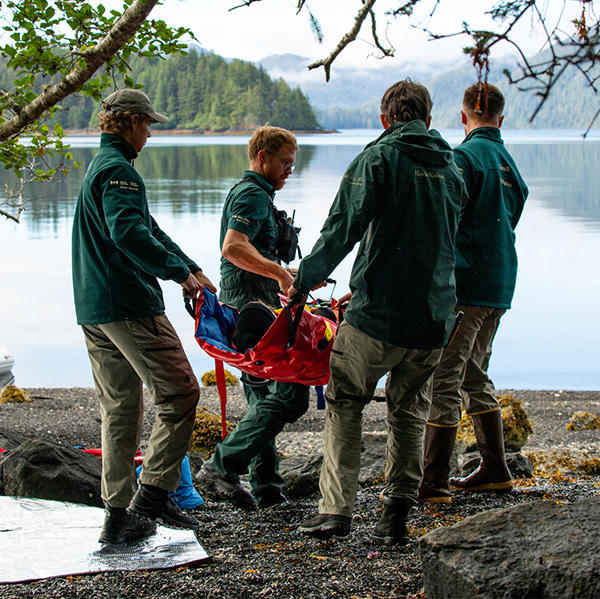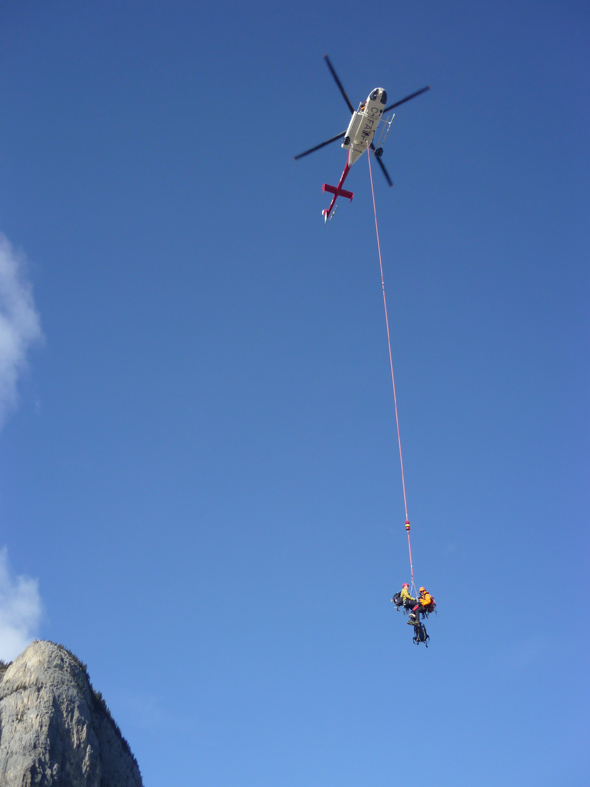Search and rescue
Mountain safety

In all of the Mountain National Parks Mountain Safety Specialists are prepared to respond 24/7 to a wide variety of emergencies all year round. Mountain Safety Specialists are all professionally trained search and rescue operation leaders. Other members of Parks Canada’s personnel are also trained to assist during search and rescue operations. They include a trained avalanche dog and his handler, who is also highly trained.
Cell, Sat and SPOT
Calls from land lines and most often cell phones are received first by trained staff at the Parks Canada dispatch offices of the responding national park. While some cell phone reception is available at most front country areas, cell phone reception cannot be expected in many backcountry areas throughout the Mountain National Parks. While satellite phones and personal locator beacon devices such as SPOT can be useful, they cannot be relied upon absolutely. All backcountry travellers should be familiar with the abilities and limitations of the devices they chose to carry. They should also be prepared to carry out self-rescue and to keep themselves and their partners warm and sheltered during the time it takes for a rescue team to reach them.

Emergency?
Do you know what number to call if you find yourself in an emergency situation?
If you have a satellite phone, the Parks Canada emergency number is 403.762.4506. Or, dial 911 and tell the operator which Mountain National Park, and that you need assistance from the Park Rescue Team. Be ready to tell them:
- Where? Your exact location (mountain, route, river, hut, glacier, etc.)
- What? Type of emergency; number of victims; seriousness and type of injuries.
- Who? Your name, phone number you are calling from (including area code).
- When? Time of the accident.

Dispatch will then connect you directly to the rescue leader who will ask you specific questions regarding the emergency.
Would you know how to signal to a helicopter overhead that you need help?
When the helicopter approaches, signal and stay in position (do not wave your arms).
Search
When a call is received, dispatchers ask questions to gain as much information as possible about the nature of the emergency, including the sex, age, name, location and injuries suffered by an accident victim. In the case of a missing person, they will inquire about the person’s car and location, such as a trailhead, and potential hike, climbing route, ski tour or river the person might have been headed for. The more information the dispatcher is able to collect, the more information can be relayed to the search and rescue team.
Rescue

Mountain Rescue Specialists are trained to respond to a wide variety of scenarios by land, by helicopter or by jet boat. If a person has suffered an injury in an easy-to-reach-location not far from a trailhead, the rescue team will likely choose to respond with a four-person crew rolling a stretcher equipped with fat, dirt trail-friendly tires. In the case of a serious injury or a medical emergency, such as a heart attack, a paramedic will likely accompany the team.
When the team is called to respond to a site that is not close or relatively easy to access, they will choose to travel by helicopter to reach the victim, and to transport them to safety or to hospital. If the victim is in a particularly inaccessible location, such as a steep cliff or deep canyon, a helicopter long-line system is deployed. First the rescuer is lowered to the victim, who is then packed on a specially designed stretcher which is attached to a cable connected to the helicopter, and slung to safety. Helicopter rescues are often more practical and efficient than land-based rescues, since they require less manpower – only two rescuers, rather than four – for a shorter period of time. A shorter rescue time is very often in the best interest of the victim, who can be transported to hospital more quickly.
Unfortunately, from time to time Mountain Rescue Specialists are required to recover bodies of deceased persons.
- Date modified :